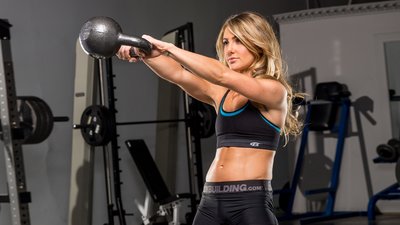Your gluteal muscles do a lot more than keep your jeans from falling down—or at least, they're supposed to. When strong, they're a powerful locomotive force that carries out functions like hip extension, hip abduction, and hip external rotation with power and precision. There's a strong case to be made that the gluteus maximus is the single most important muscle for sports. When athletes talk about jumping higher, running faster, throwing farther, or deadlifting more weight, what I hear is: "Hot damn, I need me some extra strong glutes!'
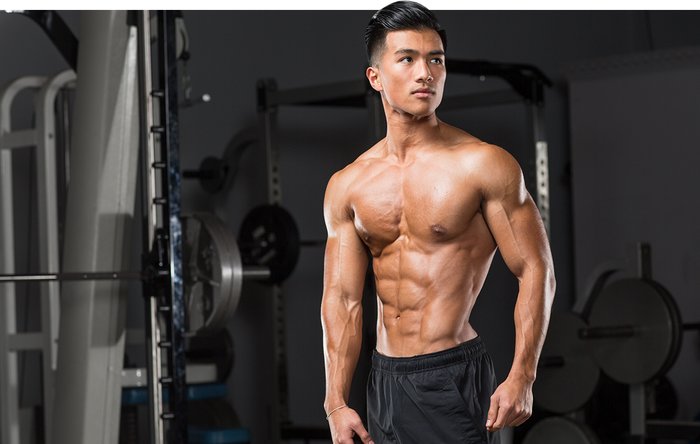
A lot of people think that their gluteal muscles are already plenty strong, but they don't realize that their lifestyles lead them into "gluteal amnesia," a term coined by Dr. Stuart McGill, a professor of spine biomechanics at the University of Waterloo. Extended periods of sitting—and even standing—day after day cause the glutes to basically go on vacation and activate less and less. Over time, people lose what they don't use, and then they just forget.
The notion of forgetting how to utilize the butt muscles sounds preposterous, but think of it this way: More than 80 percent of the American population complains of lower back pain, knee problems, and hip pain. When your glutes don't activate correctly, compensatory actions have to occur to pull up the slack. Your lower back isn't designed to do the butt's work, so it's logical that these new demands could lead to discomfort there and elsewhere in the lower body.
Even in the absence of low back pain, inhibited glutes will diminish exercise results and increase the risk of other injuries. And while squats and deadlifts are great for the posterior chain, their recruitment of the glutes is often overstated. Keep doing them of course, but also consider adding some of the following glute-blasting moves to your program.
Exercise 1: Single-Leg Glute Bridge
The first step to increased strength and power is the proper reactivation of the gluteal muscles. A single-leg glute bridge using nothing more than your bodyweight will give you the necessary stimulus and then some. Unlike other posterior chain movements that prioritize the hamstring, this focuses far more on the glutes, so you might expect some tenderness once you start doing them. But they're worth the pain, because when you train each leg independently, you encourage muscular symmetry and help build lower body coordination and hip stability.
When bridging up, make sure to drive through your heels to avoid arching your lumbar spine. When done correctly, this exercise can activate more gluteal muscle than a 1RM max squat, so high reps aren't a must. This is a great warm-up movement to gear your heavy squats, deadlifts, or the other weight-bearing glute exercises listed here.
Exercise 2: Hip Thrust
The hip thrust is like the lower body equivalent of the bench press. Its low learning curve affords a person with poor coordination and minimal coaching a fair level of mastery by the end of the first session. You may initially scoff at the idea of thrusting upward from an elevated position, but hip thrusts are your money exercise for glute-building, much more than any squat or deadlift variation.
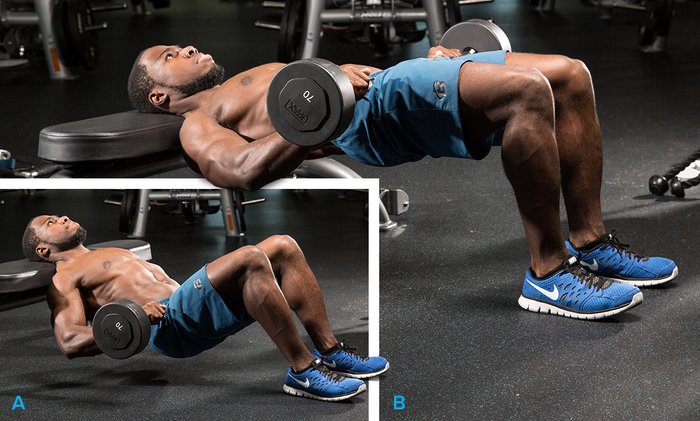
Barbell Hip Thrust
To perform this exercise, you need an exercise bench on which to rest your shoulders and a barbell, although a heavy dumbbell or kettlebell could also work. The weight should lie across your pelvis on top of a barbell pad, Airex pad, or one of the other random cushions lying around the edge of the gym. Elevating the shoulders—and in time, the feet—will help focus more of the tension on the glutes rather than the hamstrings or quads. You want to feel the burn here.
Exercise 3: Bulgarian Split Squat
The Bulgarian split squat is often referred to simply as a "split squat," but to be accurate a split squat has the rear leg on the ground. The Bulgarian squat moves your back foot onto a bench, encouraging core strength and overall balance while moving the lower body through a large range of motion. It also increases hip flexor flexibility, which translates positively into gains in the squats and elsewhere.
Lest we forget, it's also a grade-A glute thrasher. Unfortunately, people often go too light with this movement to discover this benefit. That's a shame, because the Bulgarian split squat is highly effective with a heavy load, even if that load is still a fraction of what you could lift with bilateral squat variations. Dumbbells, kettlebells, sandbags, barbells, and chains all work well to add weight and intensity in unilateral squats, but be warned that each also comes with unique balance challenges.
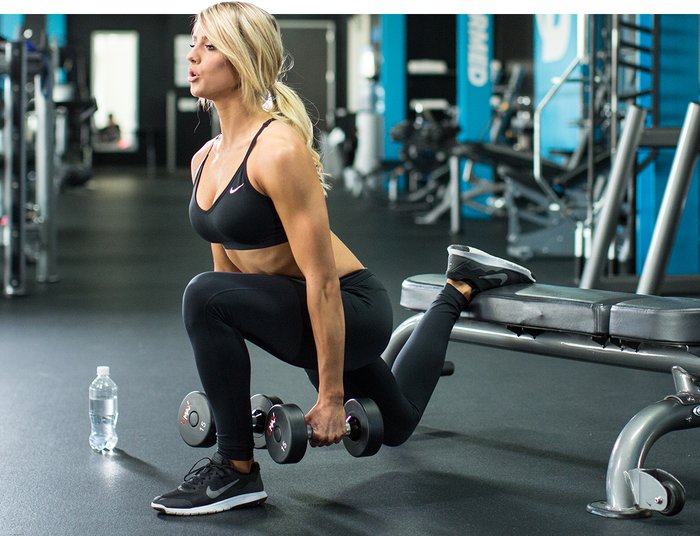
Bulgarian Split Squat
Exercise 4: Kettlebell Swings
I see kettlebell swings botched all the time at the gym. People confuse it for an upper body movement when in fact it's an explosive, fluid movement driven almost totally by a force from the hips and powerful glute-hamstring contractions. The upper body's role is simply to swing like a pendulum from the momentum generated by powerful horizontal hip thrusts.
There are many benefits to the kettlebell swing, but for the purpose of this article, they hammer the glutes and train your hips to become more adept at hinging and generating power. Stuart McGill performed a case study on Pavel Tsatsouline, the modern king of kettlebells, in which Tsatsouline was able to achieve 100 percent peak muscle activation in the gluteus maximus by swinging a 70-pound kettlebell. There's no need to rush to that heavy of a weight for the rest of us, though, so build up slowly like you would for any other loaded movement.
Another benefit of the swing is that lifters who have a firm command of it tend to excel in deadlifts, squats, and hip thrusts. The swing also emulates the large amounts of horizontal force produced by the hips of trained sprinters, making it a worthwhile complement to any sprinting program.
Exercise 5: Step-Ups
Step-ups are one of my favorite leg exercises because they take the lower body through a full range of motion. This unilateral movement blitzes the posterior chain and is easy to set up, especially when the squat racks and other equipment are occupied.
The gains you make in step-ups translate well into sprinting, jumping, and a wide range of athletics. Step-ups are especially ideal for athletes who have poor ankle flexibility or lower back issues, because he exercise places minimal stress on the back. It likewise improves knee stability, which is important for athletic performance and injury prevention inside the gym and out.
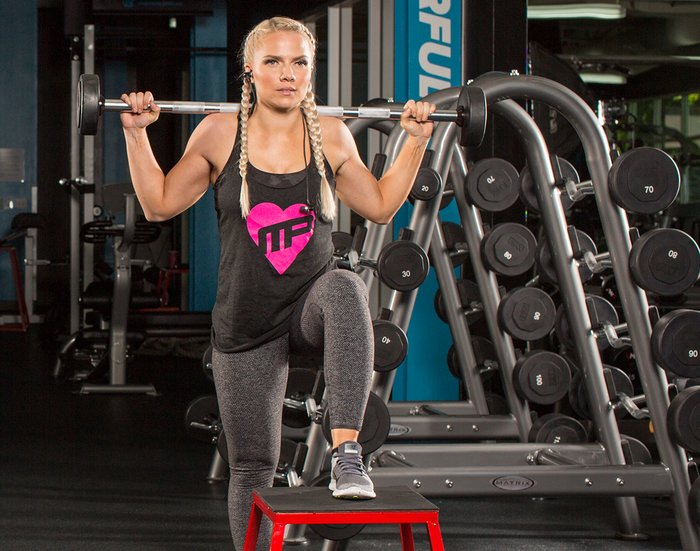
Barbell Step-Up
To perform a step-up, use either a barbell or dumbbells and step up to a solid platform that is of knee-height or slightly higher. People often ignore the eccentric component—the step back down—but it's just as important as the eccentric portions of any other movement. Be sure to return to the ground in a controlled manner to get the most out of the step-up.
Bottom Line
If you want to build stronger glutes, you need to consciously work at it. This means not only performing these types of exercises, but also taking the time and effort to make sure you feel the glutes activating. Focus on squeezing the cheeks as hard as you can on each rep of each exercise until it becomes second nature. This will take time to master.
Over time and with plenty of proper practice, your body will engage the glutes without you having to think about it. Before you know it, you'll be leaving your friends and opponents ... behind.

